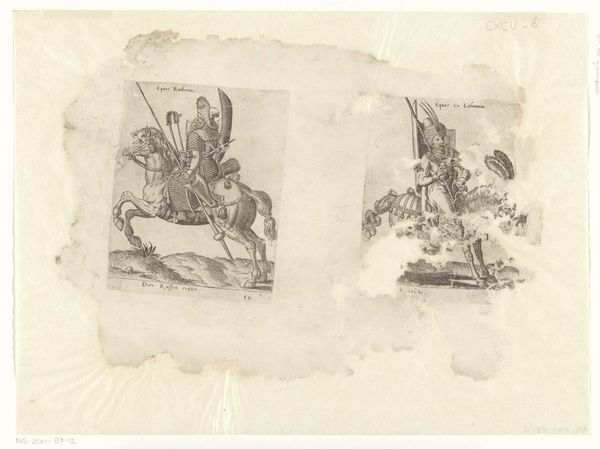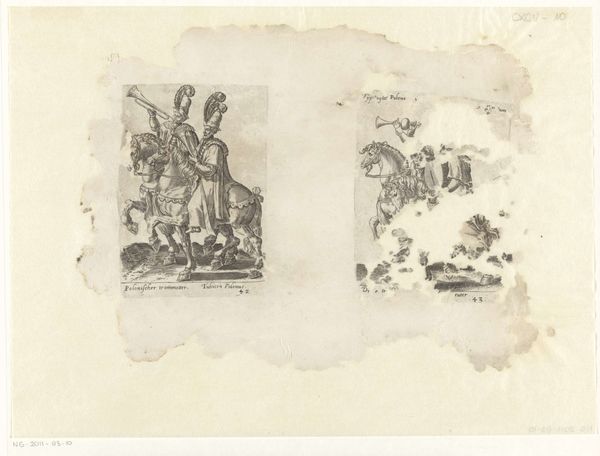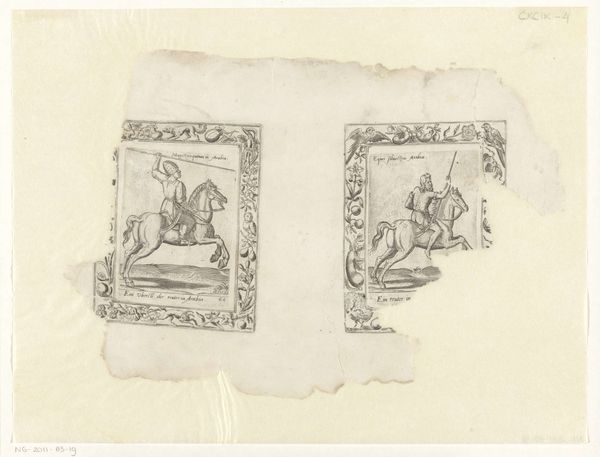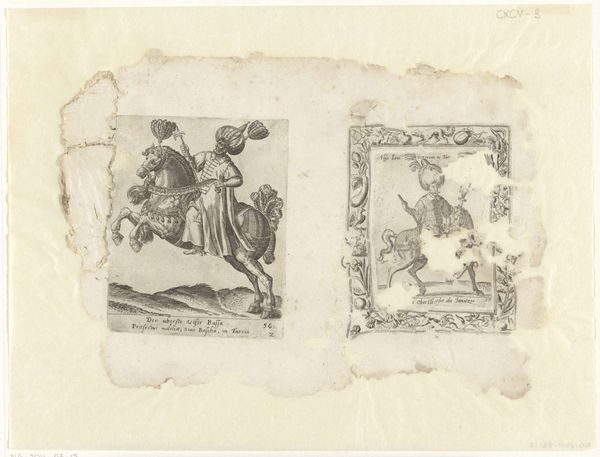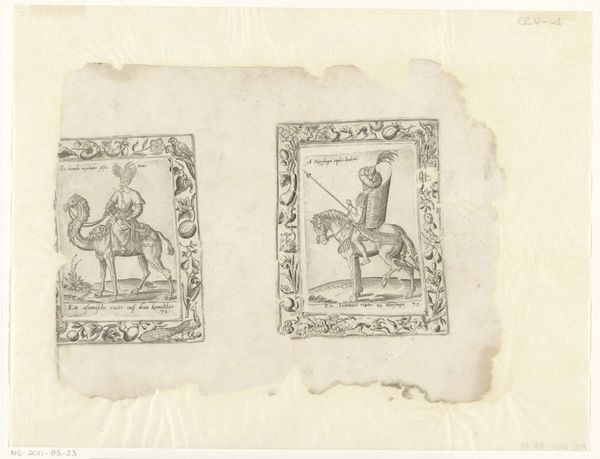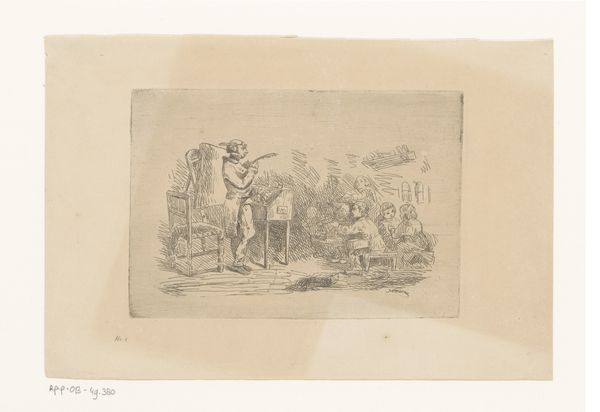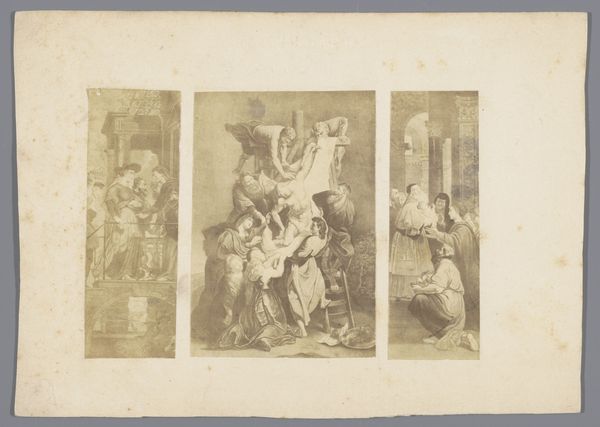
print, engraving
#
portrait
#
narrative-art
# print
#
asian-art
#
old engraving style
#
figuration
#
engraving
Dimensions: height 234 mm, width 305 mm
Copyright: Rijks Museum: Open Domain
Abraham de Bruyn created this print, "Indian Prince and Indians on Elephant," in the late 16th century, a period marked by burgeoning European interest in, and often distorted representations of, distant lands. De Bruyn, who never traveled to India, relied on secondhand accounts and prevailing European fantasies to depict the “Indies.” This work offers a glimpse into the complex interplay between exploration, representation, and power. Note how the artist exoticizes the Indian figures, marking them as distinctly 'other' through dress and accoutrements, yet simultaneously imbues them with a certain regal bearing. This reflects the dual, often contradictory, European attitudes towards non-European cultures at the time: a mixture of fascination and a desire to dominate. The print serves not as a neutral depiction, but as a cultural artifact, revealing more about European perceptions of the ‘Orient’ than about the realities of Indian life. It's a reminder of how images can shape, reflect, and reinforce cultural narratives, and the enduring power of representation in mediating our understanding of the world.
Comments
No comments
Be the first to comment and join the conversation on the ultimate creative platform.



